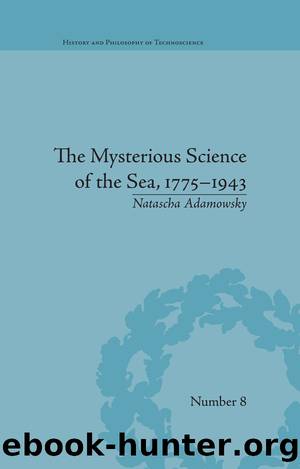The Mysterious Science of the Sea, 1775â1943 by Natascha Adamowsky

Author:Natascha Adamowsky [Adamowsky, Natascha]
Language: eng
Format: epub
Tags: History, General, Science
ISBN: 9781317317203
Google: j3BECgAAQBAJ
Publisher: Routledge
Published: 2015-10-06T16:11:40+00:00
The design and understanding of the world, as presented in nineteenth-century aquariums, bore carnivalesque traits à la Bakhtin. In contrast to both classical conceptions of the body and the naturalistic, individualized forms of early modernity, grotesque physicality blurs the borders between the world and its inhabitants by making them mobile and hyperbolic to the point of virtual madness. Phenomena are shown in the course of transformation and metamorphosis, coming into being and vanishing again. Two bodies appear as one; alternately, each body brings forth the other. From this perspective, the aquarium, which had promised a clear view through its glass walls, reflected a world exactly matching the artistic logic of the grotesque. As it arranged the field of vision, the aquarium presented the ocean realm as a sphere where differences disappeared and transitory phenomena achieved paradoxical stability; everything seemed assembled for an illustrious feast and yielded an opulent tableau vivant. Here, creatures evidently thrived on being indeterminate and incapable of remaining still â on flowing transitions that actually made the extreme their goal. The underwater obscenities, contradictory couplings and seemingly impossible forms revealed, to a rapt public, the relativity of their own circumstances and the bourgeois world. Scientific observation and the accounts offered in popular journals depicted a carnivalesque inventory of grotesque anatomies; here, the fundamental distinctions between life and death, male and female, yielded to a submarine poetics of metamorphosis. Blurring standing boundaries and dissolving discrete forms, the protagonists of aquariums took the stage as âgrotesque bodiesâ that cycled through all the variants of corporeal integrity â and the limits which define it. At the mid-nineteenth century, literature and visual culture were altogether fascinated by the interplay of natural and artificial elements. The love life of candy-coloured bristle worms, say, or the meals of âgreen-hairedâ urchins brought out the aesthetic component of scientific observation in alluring, capricious and provocative manner.
Aquariums played the part of highly curious objects in the epistemological discourse of the late-nineteenth and early-twentieth centuries. Any knowledge they afforded also contained an aesthetic dimension; they were the key medium of the age, promising to fulfill the dream of lift ing the green veil of the waves in order to reveal the depths of the sea. As such, aquariums were employed both for experiments and as mobile laboratories; indeed, it seemed they represented the paragon of the scientific method: a little world apart, where researchers could vary events at will. On the other hand â and at the same time â they were not just epistemic objects and sites for generating evidence, but rather subversive media-aesthetic designs of fantasy: an intoxicating kaleidoscope of the imaginary and a room for projecting jet-black thoughts. As a libidinous technology of observation and (re)production, aquariums transformed their occupants from items of study into poetic objects, objets ambigus or objets à réaction poetique,91 serving invention and inspiration alike by offering a source of enigma. The impression that one was witnessing scenes of a world underwater caused scientific perception and aesthetic experience to merge.
Download
This site does not store any files on its server. We only index and link to content provided by other sites. Please contact the content providers to delete copyright contents if any and email us, we'll remove relevant links or contents immediately.
The Lonely City by Olivia Laing(4566)
Animal Frequency by Melissa Alvarez(4148)
All Creatures Great and Small by James Herriot(3980)
Walking by Henry David Thoreau(3681)
Exit West by Mohsin Hamid(3632)
Origin Story: A Big History of Everything by David Christian(3471)
COSMOS by Carl Sagan(3346)
How to Read Water: Clues and Patterns from Puddles to the Sea (Natural Navigation) by Tristan Gooley(3236)
How to Do Nothing by Jenny Odell(3100)
The Inner Life of Animals by Peter Wohlleben(3099)
Hedgerow by John Wright(3095)
How to Read Nature by Tristan Gooley(3073)
Project Animal Farm: An Accidental Journey into the Secret World of Farming and the Truth About Our Food by Sonia Faruqi(3013)
Origin Story by David Christian(2990)
Water by Ian Miller(2950)
A Forest Journey by John Perlin(2911)
The Plant Messiah by Carlos Magdalena(2745)
A Wilder Time by William E. Glassley(2686)
Forests: A Very Short Introduction by Jaboury Ghazoul(2671)
